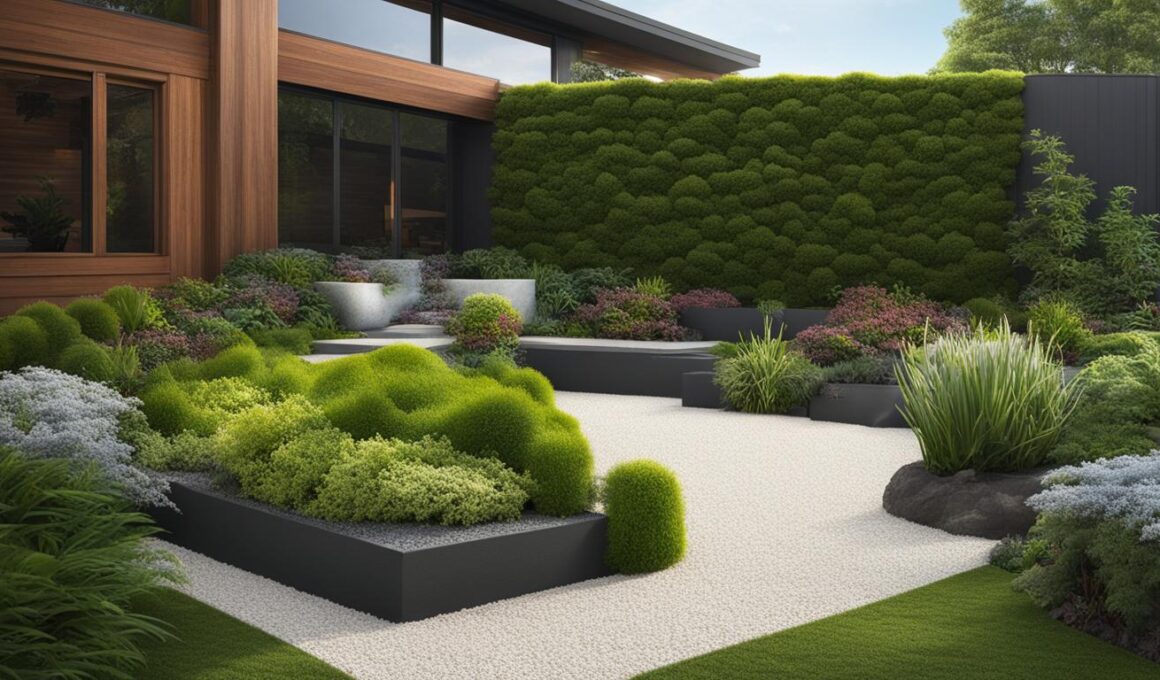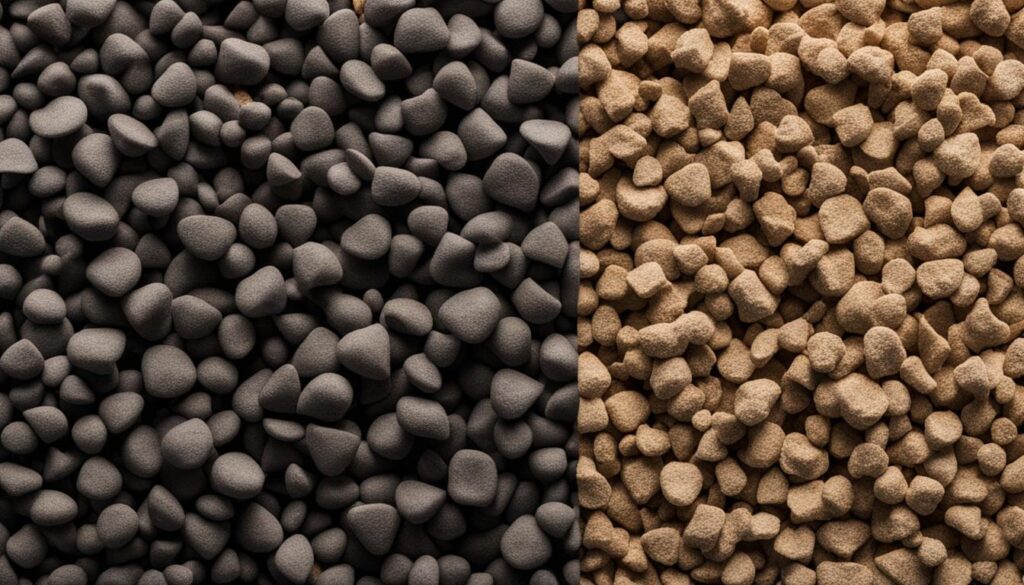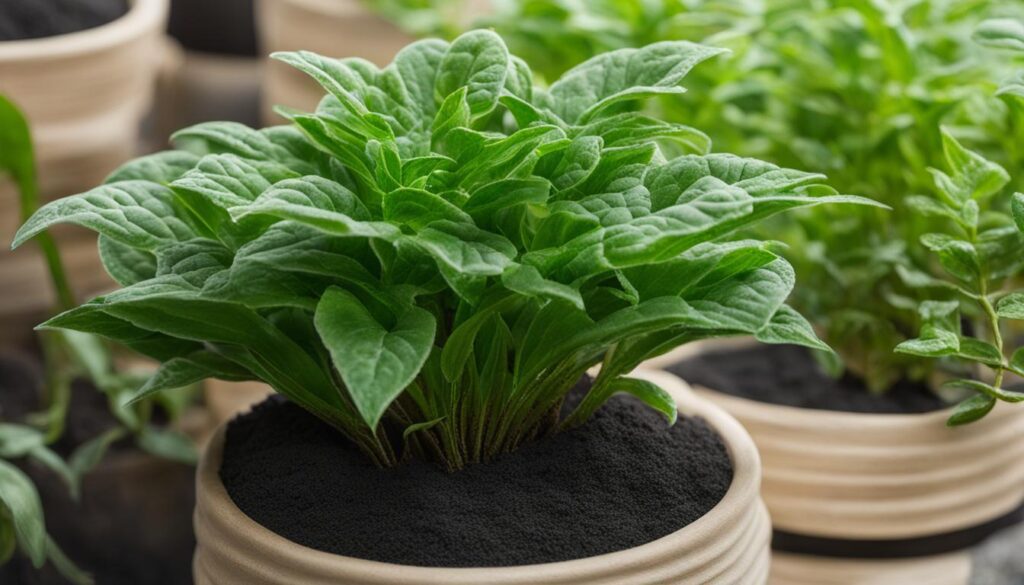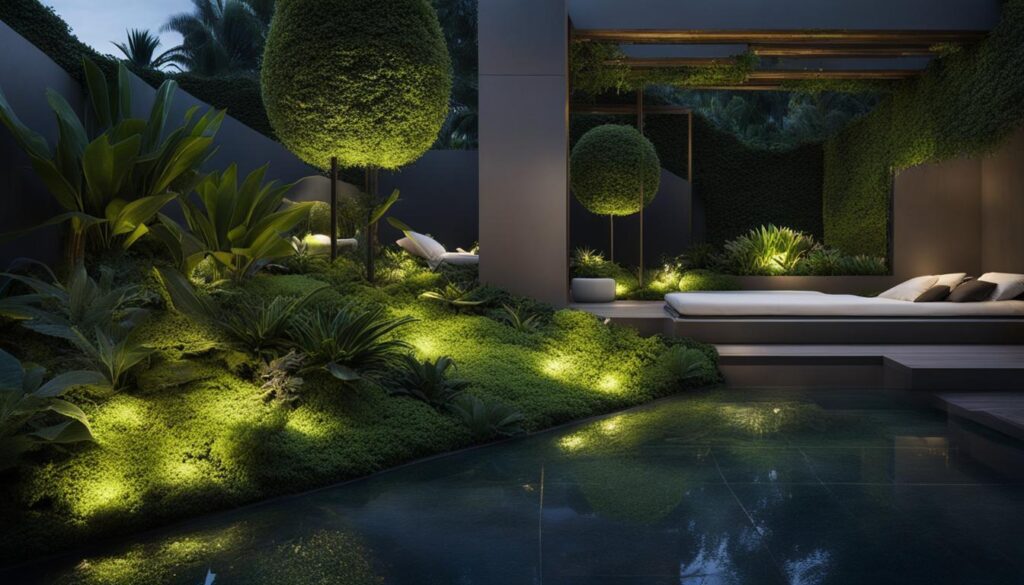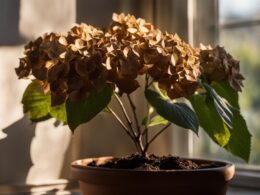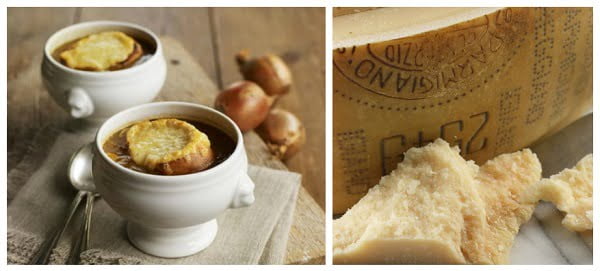As a gardening enthusiast, you may have encountered potting mixes that don’t drain well and lack sufficient porosity, leading to damp soil and potential root rot. Perlite and pumice are natural volcanic materials used in gardening to enhance drainage, prevent soil compaction, and provide a lasting, pH-neutral addition to potting mixes. In this guide, we’ll delve deeper into the differences between perlite and pumice, uncovering which one is right for your gardening needs.
Key Takeaways
- Both perlite and pumice improve soil aeration and drainage, promoting plant health.
- Perlite is lightweight, affordable, and widely available, making it a popular soil amendment.
- Pumice offers greater stability due to its weight and is better suited for top-heavy plants.
- Environmental impact varies, with pumice having a lower carbon footprint than perlite.
- Organic gardeners may prefer pumice for its natural, chemical-free properties.
Introducing Perlite and Pumice in Gardening
Gardening enthusiasts may face challenges with commercially available potting mixes that lack sufficient porosity and drainage, eventually leading to damp soil and potential root rot. Perlite and pumice, two natural volcanic materials, offer an effective solution to enhance drainage, prevent soil compaction, and provide a pH-neutral addition to potting mixes. This section delves into the importance of drainage and aeration for ensuring plant health and the role of porosity in soil mixtures.
Why Drainage and Aeration Matter for Plant Health
Drainage and aeration play a crucial role in maintaining healthy plants by preventing issues such as waterlogging and root diseases, like rot. Proper soil drainage prevents the buildup of excess water, while aeration supplies plant roots with the necessary oxygen for healthy growth. Both perlite gardening and pumice gardening significantly improve drainage and aeration, which are vital for indoor gardening and necessary modifications to pre-packaged potting mixes.
The Role of Porosity in Soil Mixtures
Porosity refers to the air and water-holding capacity of soil, with higher porosity equating to better soil structure.
- Enhanced soil texture: Adding porous materials such as perlite and pumice to a soil mixture improves the soil’s texture, creating optimal conditions for plant growth.
- Sufficient oxygen supply: A higher porosity content ensures that plant roots receive the oxygen they need, thereby promoting healthy growth.
- Improved water management: Increased porosity facilitates better water retention and drainage, directly impacting the plant health.
By incorporating perlite and pumice into their gardening mixtures, gardeners can optimize their soil’s porosity, create an ideal growing environment for plants, and safeguard them against waterlogging and diseases.
Understanding the Similarities Between Perlite and Pumice
Perlite and pumice are both widely utilized in gardening due to their distinctive benefits. These volcanic materials share many common characteristics, making them valuable soil amendments for improving plant growth. By closely examining their similarities, gardeners can better understand the unique qualities that make each material an essential addition to potting mixes.
- Improved soil drainage
- Increased oxygen availability for roots
- Reduction in soil compaction
- Durable structure contributing to a long lifespan
Both substances are naturally formed volcanic products, rendering them pH-neutral and ensuring they do not retain excessive amounts of water. As a result, they effectively address common gardening challenges, such as waterlogged soil and poor aeration, which can lead to plant stress and root diseases.
| Characteristic | Perlite | Pumice |
|---|---|---|
| Formation | Volcanic glass formed by rapid cooling of lava | Formed from frothy, foamy lava, which solidifies into lightweight rock |
| pH-Neutrality | Yes | Yes |
| Water Retention | Low | Low |
| Durability | Highly durable due to its glassy nature | Highly durable due to its porous, solidified lava structure |
Both perlite and pumice exhibit valuable properties that enhance gardening soil, making them essential components in potting mixes. Despite their similarities, they differ in appearance and density. Perlite has a unique, popcorn-like texture, while pumice is characterized by its porous and rough surface. By comprehending these similarities and differences, gardeners can make informed decisions about incorporating these soil amendments to create healthier, more resilient plants.
Unlocking the Benefits of Perlite
Perlite has emerged as a popular choice for gardeners looking to enhance their potting mixes. It offers several advantages, making it an ideal choice for those who aspire to grow healthy plants without breaking the bank.
Perlite: An Affordable and Accessible Option
One of the most significant benefits of perlite is its affordability. As an economical and lightweight soil amendment, perlite has gained popularity among gardening enthusiasts who seek accessible and budget-friendly options for enhancing their potting mix. Not only is it widely available, but it also serves as a cost-effective solution for providing improved drainage and aeration in various gardening applications.
Rinsing and Grading Perlite for Better Results
To maximize the effectiveness of perlite and minimize dust, it is essential to rinse it before incorporating it into your potting mix. You can achieve this by using various methods such as:
- Washing in a mesh colander
- Running water through the perlite-filled bag
Employing these techniques ensures a more productive soil mixture, which ultimately contributes to healthier plants.
Larger grades of perlite offer additional benefits, including:
- Reduced dust
- Better drainage
- Minimal floating on the soil surface
By selecting the appropriate grade of perlite and rinsing it thoroughly, you can optimize the soil’s overall health and create desirable conditions for your plants to thrive.
The Advantages of Pumice for Your Plants
When it comes to enhancing your soil for gardening, pumice has a variety of unique advantages over perlite. Its heavier weight offers stability ideal for top-heavy plants, while its natural porosity provides superior water retention and excellent drainage in soil. In this section, we’ll delve deeper into the specific benefits of pumice and how they contribute to a stable and well-optimized potting mix.
Stability and Water Retention: Pumice’s Edge over Perlite
The advantages of pumice start with its-density, which is greater than that of perlite. This increased weight helps create a stable potting mix, particularly for top-heavy plants that require a sturdy base to prevent tipping over. Furthermore, pumice’s density means it’s less likely to float to the soil’s surface when watering, making it an ideal choice for plants sensitive to their watering environment.
Another key advantage of pumice is its inherent porosity, which leads to better water retention in soil. Thanks to its porous nature, pumice can store nutrient-rich moisture that is easily accessible to plant roots, while still promoting excellent drainage and aeration. This combination of moisture retention and drainage support helps create healthier root systems, ultimately enhancing overall plant growth and vitality.
Here are more advantages of pumice over perlite:
- Less likely to float when watering, reducing the need for frequent soil amendments
- Improved aeration and drainage in heavy clay soils
- Provides essential minerals and nutrients for plant growth
- High resistance to crushing or breaking down in the potting mix
- Environmentally friendly and sustainable as it requires low levels of processing
Overall, the advantages of pumice make it an exceptional choice for gardeners seeking to optimize their soil’s water retention and stability. By incorporating pumice into your potting mix, you can provide your plants with the ideal growing environment for stronger, healthier, and more vibrant growth.
Environmental Impact: Perlite Vs Pumice
As eco-friendly gardening practices become increasingly important, understanding the environmental impact of various soil amendments is essential. Perlite and pumice both have unique sustainability factors that may influence your decision when selecting a soil amendment.
Pumice is a more sustainable option due to its minimal processing requirements. The production of pumice involves simple extraction and sorting, resulting in a lower carbon footprint. Its natural porosity and durability contribute to its long life, reducing the need for frequent replacement and minimizing waste.
On the other hand, perlite requires significant processing before it is ready for use in gardening. The production of perlite entails heating the raw material at high temperatures to expand and create its porous structure. This energy-intensive process leads to a larger carbon footprint in comparison to pumice.
- Pumice: Lower carbon footprint due to minimal processing (extraction and sorting)
- Perlite: Larger carbon footprint as a result of high-temperature processing
| Material | Processing Requirements | Carbon Footprint |
|---|---|---|
| Pumice | Minimal (extraction and sorting) | Lower |
| Perlite | High-temperature processing | Larger |
When considering the environmental impact of perlite and pumice, it’s crucial to make an informed decision based on your gardening eco-friendliness goals. Pumice may be more suitable for those seeking a more sustainable and environmentally responsible choice, while perlite remains an accessible and affordable option for many gardeners despite its higher carbon footprint. Ultimately, the decision depends on your individual priorities and practices as a gardener.
Austin and Lexi Petelski’s Take on Pumice
Owners of pumice mines, Austin and Lexi Petelski, are proponents of using organic pumice in gardening, as it is a superior growing medium that is environmentally friendly. Pumice offers undeniable benefits for horticulture, being free of chemical additives and maintaining its raw form, further exemplifying its green gardening credentials.
Why Pumice is the Organic Choice for Gardeners
Choosing pumice for your gardening needs aligns with environmentally conscious practices thanks to its low-impact mining process and sustainable extraction methods. Its natural porosity and mineral content make it an ideal choice for gardeners looking for nutrient-rich soil amendments.
The Comprehensive Benefits of Pumice in Horticulture
Pumice offers a plethora of benefits for horticulture, including:
- Enhancing soil quality with its mineral content
- Improving water conservation
- Optimizing root zone conditions
- Encouraging healthy, robust plant growth
Rich in vital trace vitamins and minerals, pumice provides plants with the nutrients they need to thrive. This versatile growing medium is suitable for various plants, contributing to its ever-growing popularity in the gardening community.
| Aspect | Organic Pumice Benefit |
|---|---|
| Soil Quality | Enriches soil with essential minerals |
| Water Conservation | Helps retain moisture while maintaining optimal drainage |
| Root Zone Conditions | Optimizes aeration, enhancing root health and preventing root rot |
| Plant Growth | Delivers vital trace vitamins and minerals for robust, healthy growth |
In conclusion, organic pumice is a top choice for environmentally friendly gardening due to its sustainable production methods and broad-ranging benefits in horticulture. As evidenced by Austin and Lexi Petelski’s advocacy for pumice, integrating this natural growing medium into your garden can greatly enhance your plants’ health and vitality.
Perlite and Pumice in Practice: Real-Life Applications
Understanding the multiple perlite applications and pumice uses in gardening allows you to make the most of these versatile soil amendments. By incorporating perlite and pumice into your gardening practices, you can enhance soil drainage, aeration, and structural stability to ensure that your plants receive the optimal conditions for root development and health. In this section, we will explore some practical gardening tips that involve the use of perlite and pumice, and when to choose one over the other.
Perlite and pumice are often used interchangeably in gardening practices, but certain scenarios may call for a specific choice. For instance, pumice has better water retention capabilities than perlite, making it a preferred option for plants that require a consistent supply of moisture. On the other hand, perlite is lighter and more readily available, making it ideal for gardeners on a budget or those with limited access to gardening supplies.
Below are some practical applications of perlite and pumice:
- Enhancing pre-packaged potting mixes
- Strengthening homemade potting soil recipes
- Improving soil structure for container gardens
- Increasing aeration and drainage for houseplants
- Supporting top-heavy plants with a stable growing medium
While perlite and pumice both offer a range of benefits for your plants, it is essential to weigh their respective costs, availability, and environmental impacts. The table below presents a summary of the main factors to consider when choosing between perlite and pumice for your garden:
| Factor | Perlite | Pumice |
|---|---|---|
| Cost | Affordable and readily available | May be more expensive and harder to find |
| Weight | Lightweight | Heavier, more stable |
| Water Retention | Less water retention | Better water retention capabilities |
| Environmental Impact | Higher carbon footprint due to processing | Lower carbon footprint, minimal processing |
Ultimately, the choice between perlite and pumice will depend on your gardening needs, budget, and environmental preferences. Regardless of your choice, both perlite and pumice can significantly improve the health and vitality of your plants when used appropriately in gardening practices.
Which Soil Amendment is Best for Terrace Gardening, Perlite or Pumice?
When it comes to beginner’s terrace gardening tips, choosing the right soil amendment is crucial. While both perlite and pumice offer improved drainage and aeration, perlite is lighter and more affordable, making it a popular choice for terrace gardening. Pumice, on the other hand, provides better water retention and is more durable.
Conclusion
When it comes to improving garden soil, the choice between perlite and pumice depends on your specific needs, budget, and environmental considerations. Both materials are highly beneficial for enhancing drainage, aeration, and overall soil structure, but they offer unique advantages and drawbacks that should be taken into account.
Perlite is an affordable and widely accessible option that can effectively improve drainage in potting mixes. Its lightweight nature may suit certain gardening applications, but can also be a disadvantage for top-heavy plants or those sensitive to watering. On the other hand, pumice is a more stable, yet slightly more expensive option that offers excellent water retention and improved stability for plants. Its lower carbon footprint also makes it a more environmentally friendly alternative.
In conclusion, carefully considering the pros and cons of both perlite and pumice can ultimately help you make an informed decision when choosing soil amendments. By selecting the best volcanic material for your gardening needs, you can better support the health and vitality of your plants, contributing to a thriving and lush garden.





